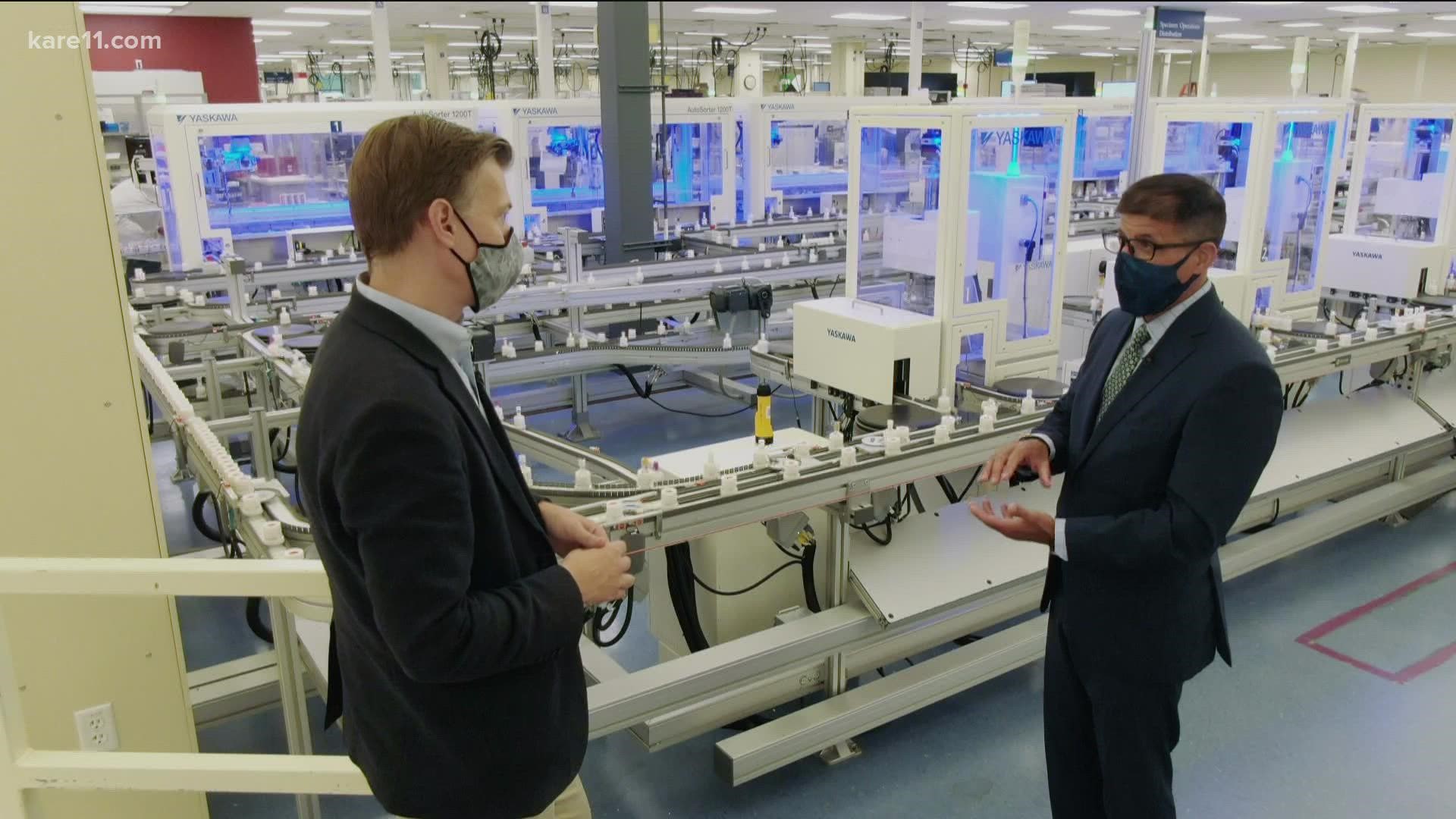ROCHESTER, Minn. — Several miles from the Mayo Clinic campus in Rochester, MN, a non-descript building is home to some work that has been central to the fight against COVID-19 across Minnesota and the rest of the country.
"We are at the loading dock facility for Mayo Clinic Laboratories," said Dr. William Morice, President of Mayo Clinic Labs.
KARE 11 recently toured the Mayo Labs facility with Dr. Morice, to better understand how it served as mission control for the Minnesota Moonshot, the statewide testing collaboration announced in April 2020, in which Mayo Labs, The University of Minnesota and the Minnesota Department of Health worked together to overcome supply-chain issues that hampered the COVID-19 response.
"This was sort of the central area, the hub, where the specimens came, so they could be sent to the right lab for that testing to be performed," said Dr. Morice.
The effort presented a huge logistical challenge, but they managed to navigate it thanks to an infrastructure that includes special boxes that ensure tracking from the time specimens arrive, until they reach their destination.
"The boxes are all barcoded, so as soon as a test is ordered and put into this box, we can track it where it is in its journey here at Mayo Clinic Laboratories," Dr. Morice said. "We can put through, literally thousands of these boxes in a few hours."
Mayo Labs is currently handling about 42,000 specimens a day amid the resurgence of the delta variant, but during the moonshot's peak, the labs processed up to 90 thousand a day, because few other labs could.
"Each specimen also has a barcode," Dr. Morice said. "So they go specifically to the lab that they need to go to get tested."
The COVID-19 Lab, alone, has now processed 4.9 million PCR tests since the pandemic began.
"This is a machine that basically can run 8,000 tests in a day," Dr. Morice said. "We were running these 24/7 at the beginning of the pandemic, and as you can imagine, a machine like this has very specific plastics. One of the things we ran into was there was actually a global shortage of the plastics for the machine. At one point we couldn't run them at full capacity, that's what we were dealing with a year ago."
The state is now less reliant on the Mayo partnership, thanks to additional third party COVID-19 rapid and saliva testing. Hospitals are also now able to handle more processing themselves, but Dr. Morice says the surge of the delta variant shows why the added infrastructure is important.
Dr. Morice: "Clearly COVID is going to be with us for some time. We're now planning about how do we make sure that this doesn't happen again."
Kent Erdahl: "What's your level of concern right now?"
Dr. Morice: "My level of concern is moderate. I say that because we certainly know how to test COVID better, we certainly know how to treat COVID better, those are all really great things. The death rate really is also a lot lower, but why it's still a threat is that it has the capacity to overwhelm healthcare systems, which is something that we've been concerned about since the start."
That's also why he says this building will continue to play a central role.
"We have the pieces in place here," Dr. Morice said. "The more we do the testing, the more we can identify where there is concern, the more we can make sure the resources are available for people who get sick. We can also understand where we need to be more cautious."

